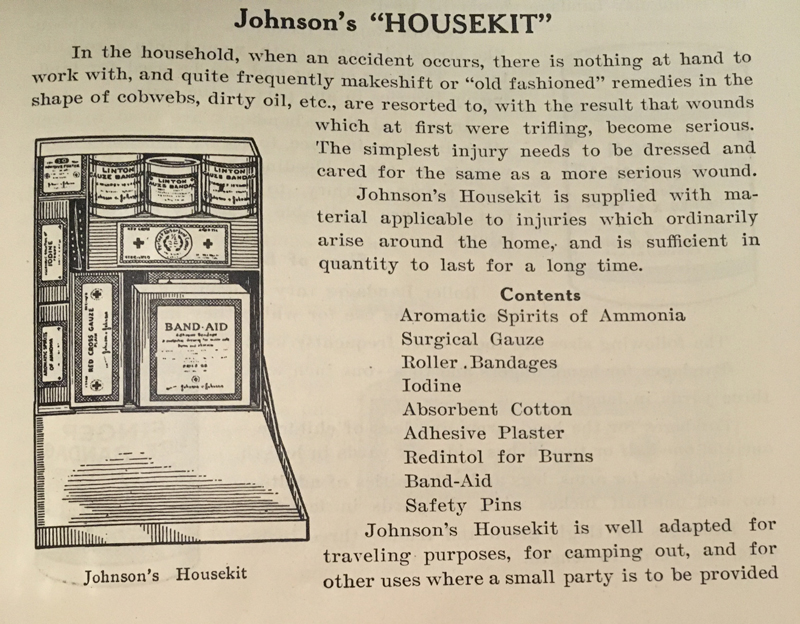Johnson & Johnson handbook touted good hygiene – along with its products

 CLAYTON, CA (Oct. 26, 2022) — In the early years of the 20th century, our country was battling numerous outbreaks of influenza, diphtheria, tuberculosis and other communicable diseases.
CLAYTON, CA (Oct. 26, 2022) — In the early years of the 20th century, our country was battling numerous outbreaks of influenza, diphtheria, tuberculosis and other communicable diseases.
It was, therefore, of utmost importance to educate citizens about how these diseases were caused by microorganisms, invisible to the naked eye, and how their spread could be slowed or prevented by actions taken in the home.
Johnson & Johnson published a household booklet in 1924 with the very long title, “Suggestions for the Care of the Sick and the Prevention of the Spread of Disease. Hygiene and Sanitation in the Household. Toilet Hints.”
It was said to have been “compiled from the latest and best authorities,” with its aim “to help the reader keep well.” The booklet, found in many homes at the time, provided useful information on how best to keep a healthy home – with the aid of Johnson & Johnson products, of course.
A healthy home
Part 1 provided a detailed account of the many communicable diseases, how they were spread and how they might be avoided. It advised patient isolation in a well-ventilated room with the floor, walls, linens, food dishes and the patient’s body kept scrupulously clean.
Part 2 dealt with returning the “sick room” to regular use by disinfecting the area with formaldehyde and sulfuric fumigators.
Part 3 covered the care of babies in the summer. Many infant illnesses and deaths occurred in this season because bottles containing milk became warm, allowing the growth of harmful microorganisms. Bottles and nipples needed to be boiled in hot water for five minutes. And, the guided noted: “Keep (baby’s) skin clean and well powdered with Johnson’s Baby Powder.”
Parts 4 and 5 discussed first aid and avoiding accidents. A First Aid Manual with “over 140 pages and over 100 illustrations, some in 2 colors” was available for purchase along with kits to be used for emergencies at home or on the road.
The “Housekit” included aromatic spirits of ammonia, iodine, gauze, bandages, absorbent cotton and safety pins. The “Travelkit” was ideal for the “Boy Scout, the Autoist and the Sportsman.”
Toilet hints
The final portion of the booklet contained “toilet hints,” along with the products needed to keep the teeth and body in excellent working order. Two types of toothpaste were available; both contained essential oils “to make them agreeable to the taste.” The consumer could choose either a chalk or neutral soap base.
The star of Johnson & Johnson’s health product offerings was its Synol Soap, manufactured in 1901 for physicians requesting a disinfectant. Available in liquid or cake form, it had a strong smell due to a wood tar derivative and was said to be able to clean and disinfect just about anything: hands, baby bottles, pimples, floors, laundry, etc. It was also excellent for removing makeup, treating dandruff and bad breath, preserving shoe leather, removing typewriter ribbon stains and myriad other uses. A wonder product in use until the 1950s.
For more information or to become a member of the Clayton Historical Society, visit their web site claytonhistory.org.

Debbie Eistetter
Debbie Eistetter has been a resident of Clayton for almost 30 years. She serves on the Board of the Clayton Historical Society and believes that history shows us the way to a more enlightened present and hopeful future. For more information about the CHS Museum please visit claytonhistory.org
